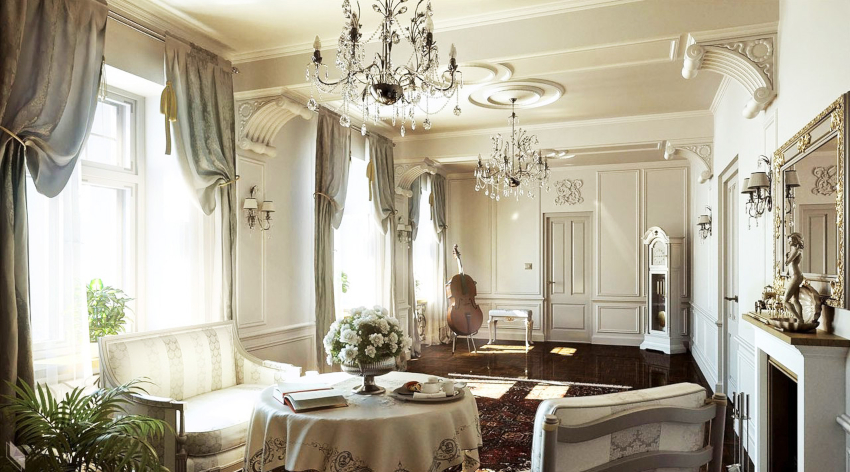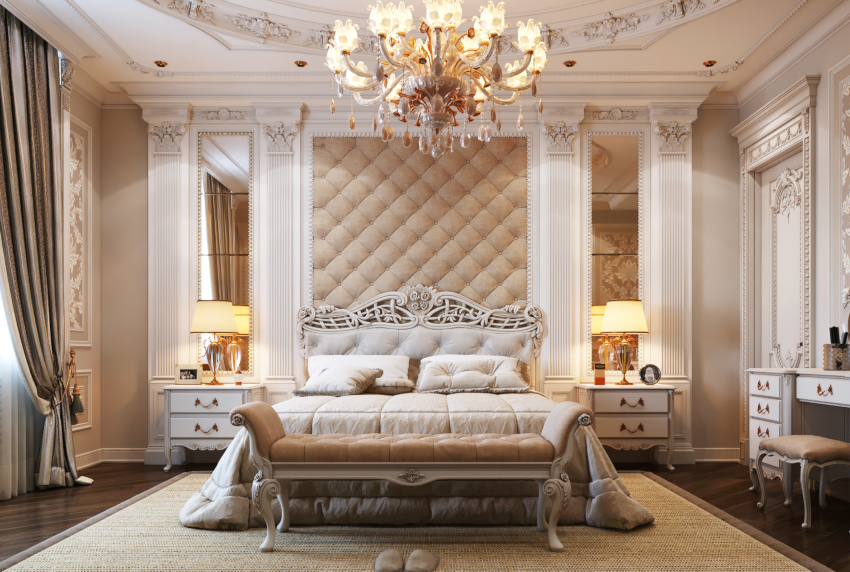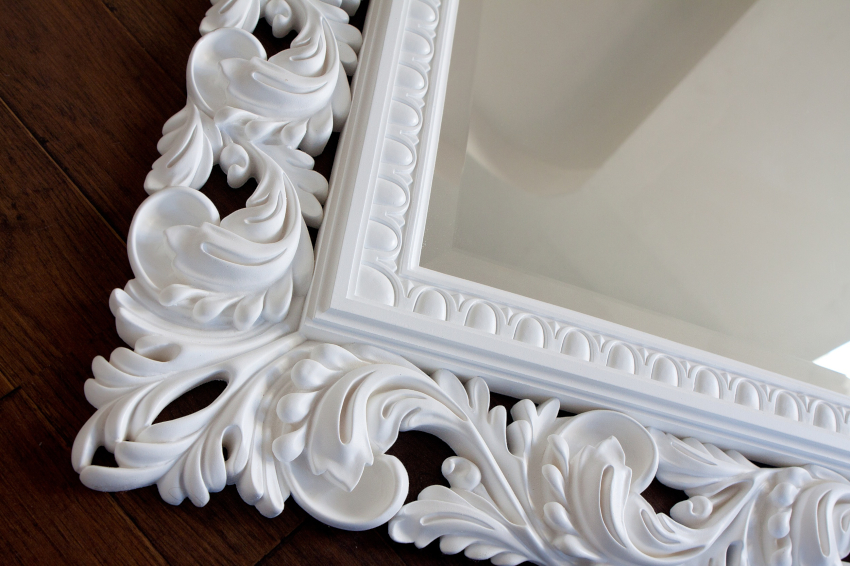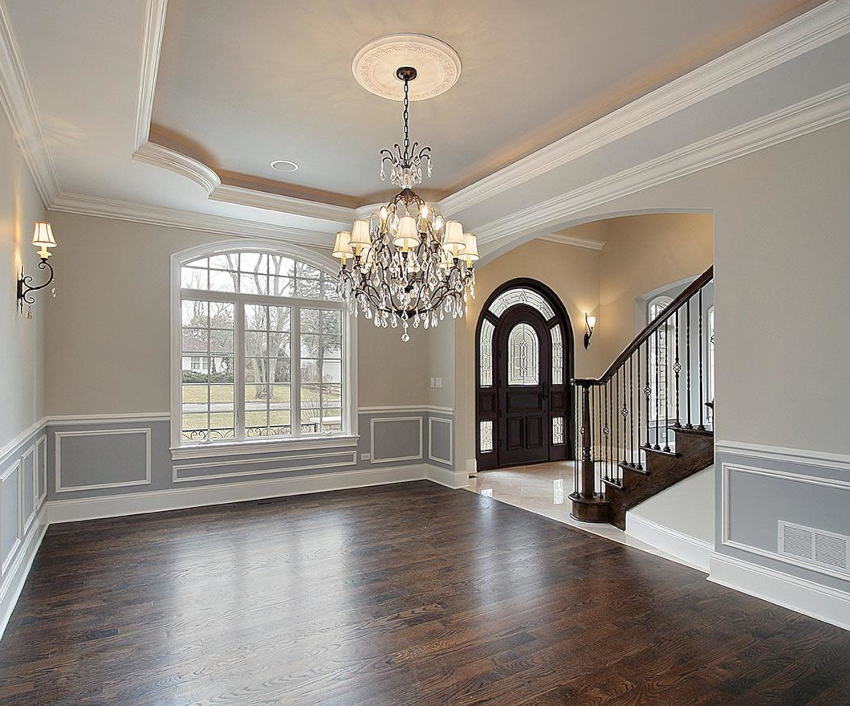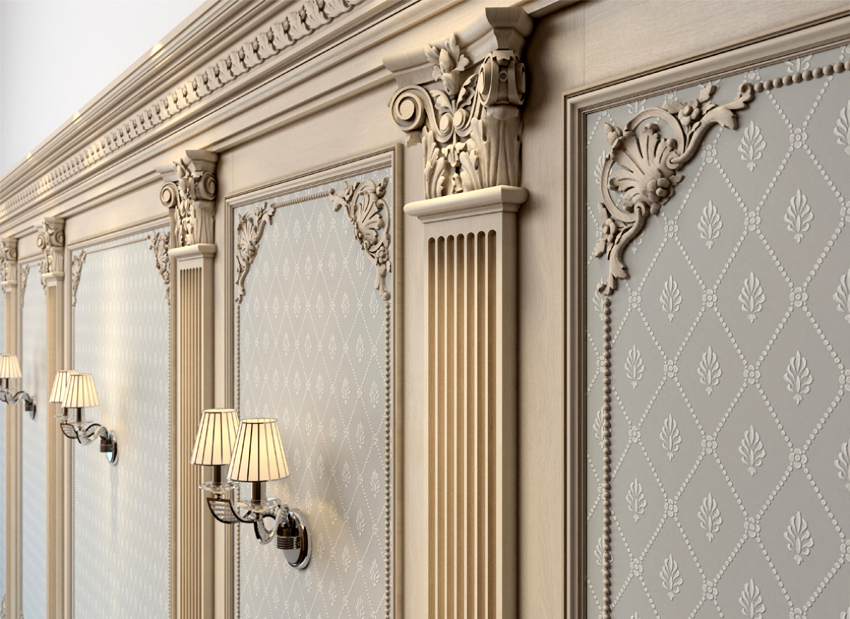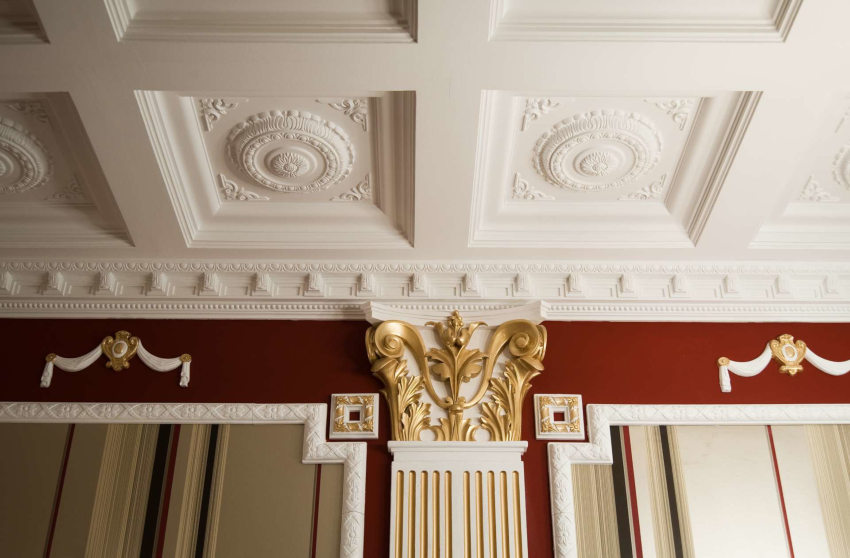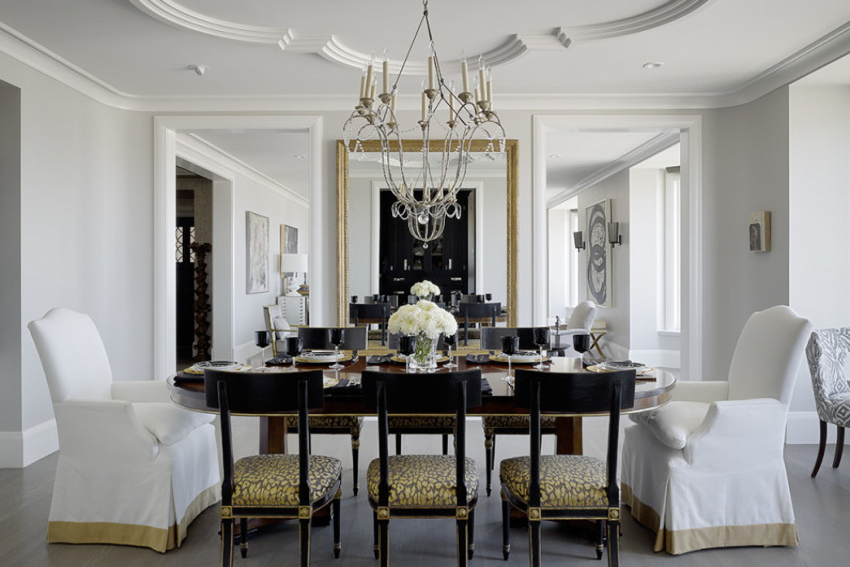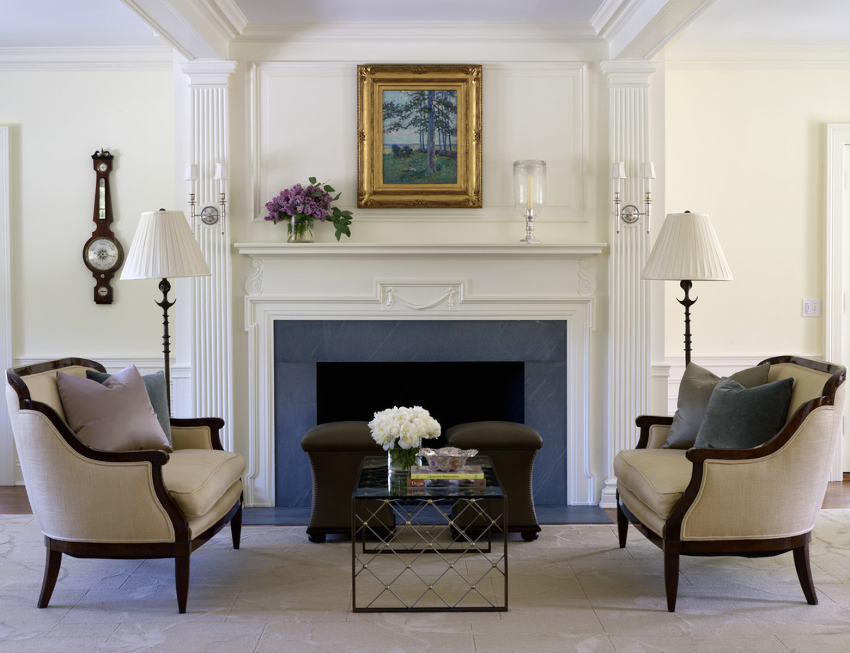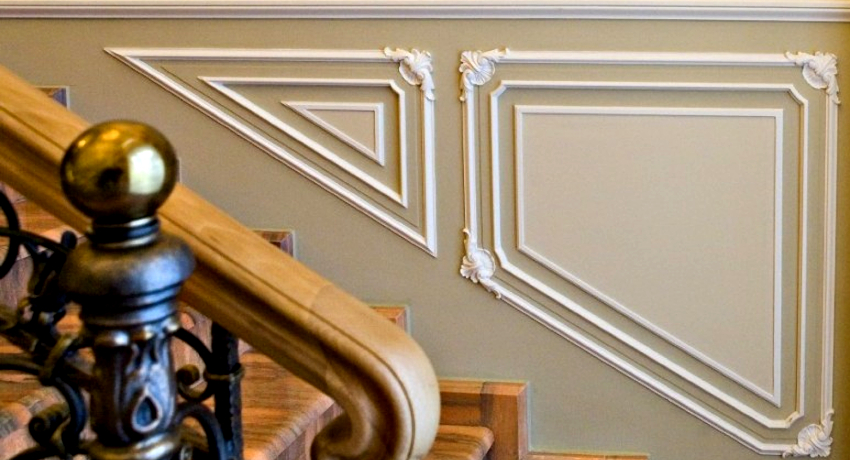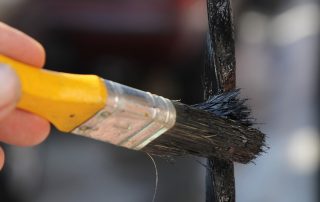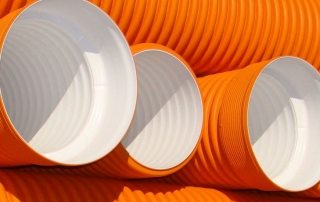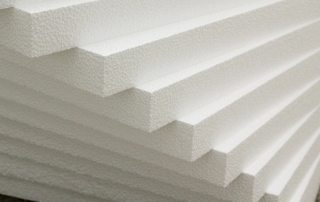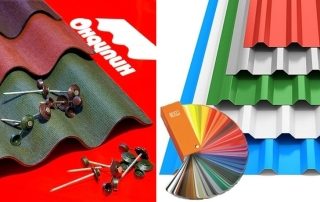One of the most common ways to give a room nobility, sophistication, grace and aristocracy is to decorate it with decorative stucco molding. It is made from different materials: gypsum, clay or polystyrene. The most popular and affordable option is polyurethane stucco molding, which is flexible and practical. This article will tell you more about the pros and cons of the material, the types and features of installation.
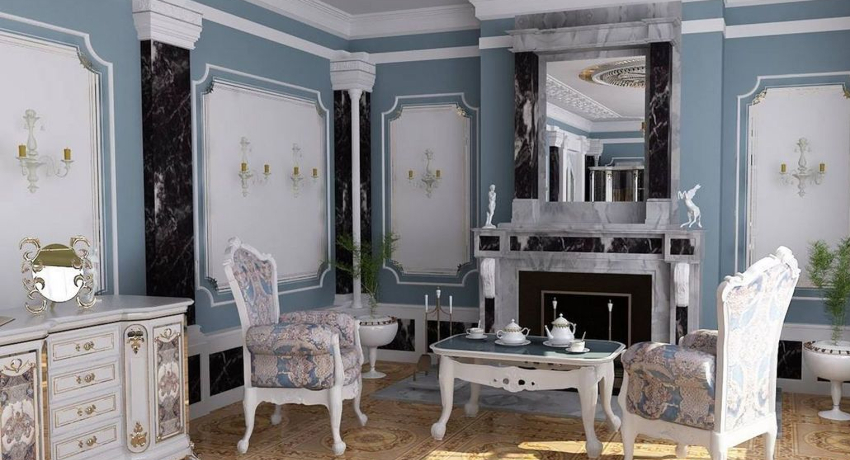
Stucco molding made of polyurethane is very flexible and practical, therefore it is the most popular
Content [Hide]
- 1 What is polyurethane stucco molding: the history of invention
- 2 Features of creating parts from polyurethane stucco molding
- 3 Polyurethane stucco molding: advantages and disadvantages
- 4 Types of stucco decoration made of polyurethane in the interior and in the design of facades
- 5 Polyurethane stucco molding Europlast: popularity, supported by quality
What is polyurethane stucco molding: the history of invention
The desire to surround yourself and your home with beauty and luxury is a natural phenomenon. One of the ways to implement it is to decorate the interior of the house with exquisite and solid stucco molding. Gypsum is considered a classic material in this direction of decor, but it is not suitable for any room, it is also laborious and expensive. Therefore, an alternative is polyurethane decor, which, in terms of visual characteristics, not only is not inferior to gypsum stucco molding, but in many respects even surpasses it.
They began to use stucco molding in the interior as decoration a long time ago, so the exact time of its appearance is unknown. Archaeological finds indicate that the earliest discovered samples of such decorative elements date back to the fifth millennium BC. They were made from plaster by hand. Such a pleasure was quite expensive and, accordingly, only available to members of the nobility.
Polyurethane appeared much later, and as a decoration of premises it began to be used only in the 70s of the twentieth century. They began to use polyurethane molded parts in the USA, then the popularity quickly spread to Europe and grew rapidly.
The material itself is foamed plastic, during the processing of which decorative elements are formed and then baked. The result is a fairly durable, practical material that allows repeated processing, and over time does not crumble or turn yellow.
Features of creating parts from polyurethane stucco molding
The technological process of manufacturing polyurethane is a chemical reaction of two main components - polyol and isocyanate. When these substances interact, a reaction occurs in the form of foaming. As a result, a certain form is completely filled with foam. The more space in the mold, the less dense the material. In order to compact the mass, pouring is done under pressure, and the molds are made of heavy metals that can withstand high compression.
Helpful advice! You need to buy stucco molding only from certified manufacturers. If the technology is violated, then the surface of the material can be grainy, with a blurred pattern. Such stucco molding is made by handicraft manufacturers, for example, in China.
The foam obtained under such conditions has a high level of density, which is equal to the density of coniferous wood. At the same time, the material is easy to process, since cracks and breaks do not appear on it. You can even drive nails into polyurethane products.
Thus, the technological chain for the production of decorative stucco molding from polyurethane is rather complicated. Qualified specialists of different directions are involved in its creation, in particular, artists, designers, constructors and technologists. The process itself includes the following stages:
- sketching and modeling;
- mold production;
- preparation of the mixture;
- pouring into a mold;
- pressure treatment;
- grinding and painting of finished stucco molding.
Polyurethane stucco molding: advantages and disadvantages
The complexity of the technological process of stucco molding production is compensated by a number of advantages of the polyurethane material, among which, first of all, the following should be noted:
- lightness, which is important not only during transportation, but also during installation;
- plasticity, due to which the product can be additionally machined with various tools and fit parts to the desired size;
- moisture resistance allows the material to be used in rooms with high humidity;
- frost resistance allows the use of polyurethane stucco molding in the external decoration of buildings;
- high level of strength and durability guarantees long-term operation of the product without the threat of cracking and crumbling;
- a wide selection of decorative elements in the production of which polyurethane is used: moldings, columns, pilasters with rosettes;
- ease of installation lies in fastening to a special adhesive mixture, which can be easily done independently, without the involvement of specialists;
- additional decoration in the form of coating the product with paint or varnish, provided the surface is primed.
In addition to the main advantages of high density and plasticity, it should be noted such an advantage as resistance to the effects of harmful fungi, bacteria and insects. At the same time, polyurethane products also have disadvantages, among which the following are distinguished:
- synthetics;
- ease of ignition;
- low uniqueness of products, since models are produced according to ready-made templates and in large batches, which is due to the high cost of production of blank forms.
Helpful advice! Polyurethane can be visually styled in an antique style. To do this, you need to cover the concave surfaces with acrylic paint (in shades of beige).
Comparison of materials for the production of stucco molding: polyurethane versus gypsum and expanded polystyrene
In the process of creating stucco moldings for interiors, various materials are used, such as clay, fiberglass, gypsum, expanded polystyrene and polyurethane foam.Clay and fiberglass products are expensive, therefore they are used much less often than, for example, gypsum parts.

Gypsum stucco molding is a natural material that lasts a long time and does not lose its attractiveness
Gypsum is a natural material that allows you to create a favorable microclimate in the room, as it perfectly absorbs moisture. Decorative plaster moldings serve for a long time and at the same time do not lose their visual appeal. At the same time, moisture absorption is also a disadvantage of the material, since it cannot be used in rooms with high humidity. In this regard, polyurethane outperforms gypsum.
Expanded polystyrene is a moisture resistant material. It is lightweight, flexible and easy to install, also suitable for uneven surfaces. Even an inexperienced builder can glue such moldings. The decoration with stucco molding from expanded polystyrene loses to other materials due to its less attractive appearance, cheap texture and fragility, since it turns yellow over time. At the same time, this material is better than others for painting.
Polyurethane foam is much heavier than expanded polystyrene, but at the same time it is distinguished by its external nobility, smooth surface, purity and saturation. It is the most durable material that is resistant to various influences. In appearance it is practically not inferior to natural clay or gypsum. This is evidenced by the photo of the stucco in the interior. It should also be noted such a feature as resistance to the absorption of odors, the spread of mold and mildew, which gypsum cannot boast of.
Types of stucco decoration made of polyurethane in the interior and in the design of facades
The variety of polyurethane jewelry is very wide. They are used not only as the main design element and the main accent, but also as additional or masking details. For interior decoration they use:
- decorative rosettes on the walls, which serve as a substitute for paintings or photographs;
- columns and pedestals;
- pilasters;
- balusters;
- wall or ceiling moldings made of polyurethane;
- caissons;
- fireplace portals;
- polyurethane skirting boards;
- curbs;
- door trims, windows and mirrors;
- frames for pictures and photos;
- arches.
Facade stucco molding made of polyurethane is used as decorative fences to create compositions from stones and statues. With the help of such a decor, seams, communications and pipelines, drops and irregularities on the walls both inside and outside the premises are masked.
Such stucco molding will fit into the interior of almost any style, including modern ones. Even in strict design solutions of minimalism and high-tech, strict geometric shapes in the form of cornices or platbands can be used instead of classic curls and floral elements.
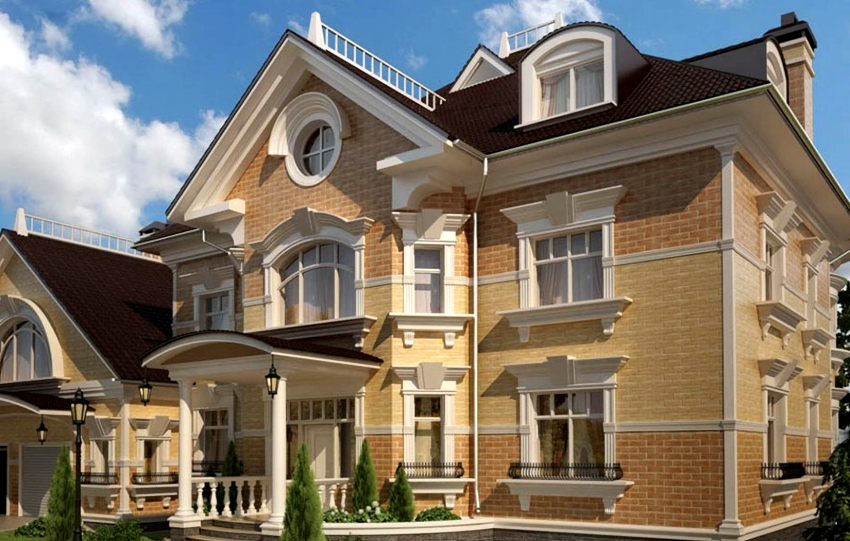
Facade stucco molding made of polyurethane is suitable for any style, even in design solutions of minimalism and high-tech
Helpful advice! The main condition in the use of stucco molding is not to overdo it, so first you need to carefully plan everything and make sketches showing the location of the stucco details.
Each of the listed elements has its own narrow or broad purpose, is used in one or several styles, and also as transitions from one stylistic design to another.
Polyurethane stucco molding on the walls: examples of the use of decorative elements
Most often, decorative polyurethane decorations are used in wall decoration. There are different elements for this. Platbands and cornices made of polyurethane are the most popular products. Most often, for the design of transitions from walls to the ceiling, stucco is used in the form of ordinary moldings with or without reliefs.In this case, it is best to paint the products to match the walls, since the contrasting strips will visually "lower" the stucco ceilings.
Decorative edging made of polyurethane looks original in door or window openings in the form of platbands. A huge selection of shapes and reliefs is an added advantage. The polyurethane arch will look great and harmoniously even on intricate and curved silhouettes. It is best that the edging of doors, skirting boards and windows match in shape and pattern.
In the design of the main entrance, niches and other elements, one can find such ornamented decor as a portal. In its creation, various polyurethane elements are used, in particular, pilasters, cornices, and garlands.
Polyurethane stucco molding will allow you to create various optical effects or, more simply, illusions. These can be geometric shapes, for example, a square within a rectangle. Moreover, if the moldings are painted in lighter or darker tones relative to the main color of the walls, then the volume of the room will be successfully emphasized and will give the impression of additional space.
Columns made of polyurethane look most successful as load-bearing elements of decor. At the same time, it is also a practical solution, since such interior elements are easy to clean. The moisture resistance of the material allows it to be used in rooms with high humidity, for example, as a frame for a bathroom mirror.
Polyurethane stucco molding on the ceiling: a good style solution
Most often, polyurethane stucco molding is used to decorate ceilings in a classic interior. At the same time, such elements can be found in other stylistic directions. Depending on the shape, size and number of decorative details, they are quite appropriate in the Baroque, Gothic, Rococo and even Art Nouveau styles. This method of decoration will help to recreate the atmosphere not only of the Renaissance, but also of ancient Rome or Egypt.
Related article:
Plaster molding: originality, luxury and grace in a modern interior
Place in the interior, materials, manufacturing and installation techniques. Practical advice on making your own hands. Photos and examples.
Ceiling moldings allow you to visually zone the space, and modern moldings create original effects on the ceiling (using LED strips and combining finishing materials). Due to its low weight, polyurethane stucco molding is also used as a decoration for stretch ceilings.
Helpful advice! Stucco elements on the ceiling have not only an aesthetic, but also a practical function, as they help to hide certain defects or smooth the transition from ceiling to wall.
Thus, the use of stucco molding in the design of ceilings gives the following advantages:
- the ability to create an original interior with high aesthetic characteristics;
- the use of borders, caissons or rosettes allows you to organize a relief surface;
- stucco molding on the ceiling helps to visually correct the geometry of the room;
- the durability of the material makes it possible not to carry out major repairs for a long time;
- stucco molding allows you to hide flaws and defects on the ceiling;
- decorative elements made of polyurethane are resistant to mechanical stress, in case of damage they can be easily restored;
- stucco molding can serve as an excellent background.
Methods for using stucco molding on a polyurethane ceiling
When decorating the ceiling with polyurethane stucco, you need to adhere to certain rules that apply to each type of decorative element.For example, a ceiling rosette serves to decorate the ceiling and is a stucco molding under a chandelier. It emphasizes the majesty of an exquisite lighting fixture or is an excellent independent decorative element. The rosette can be circular or oval, smooth or with a figured pattern. It is important that the diameter of the outlet is slightly smaller than the luminaire itself.
Cornices are used as decoration not only for walls, but also for ceilings, as a result of which a smooth transition is formed at perpendicular joints. They can be embossed or smooth. If you use a polyurethane strip in combination with an LED strip, you get the effect of a floating ceiling.
Simple moldings are often used as cornices or as geometric elements on the ceiling. Thus, it is possible to successfully solve the problem of masking errors on stucco ceilings. The corner pieces give the ceiling cornice or curb a complete and neat look.
Consoles will allow you to visually create support for a ceiling beam or zone a space. The use of a dome will help to create a recess in the false ceiling, which will contribute to the formation of an effect of height and additional space. This element looks like a hemisphere, and placing a lamp in its center increases the degree of illumination of the room. Parts in the form of squares or rectangles will create a niche-like depression called a caisson.
Polyurethane stucco molding Europlast: popularity, supported by quality
Stucco molding made of polyurethane foam is a product that enjoys enviable popularity, therefore, it is characterized by a wide selection of products and manufacturers. The leader in the domestic market is the Europlast concern, which has many years of experience and a well-deserved reputation.
Helpful advice! Decor elements must be selected in accordance with the height of the ceilings and the area of the room. Wide cornices are not suitable for decorating a room with a low ceiling, and narrow ones will be lost in a spacious room.
At first the company specialized in the production of foam rubber for furniture, later the production of decorative polyurethane foam products was mastered. Improvement of production through the use of modern high-tech equipment made Europlast polyurethane stucco molding a leader in this segment of the construction market. Branches of the company currently not only exist throughout Russia, but have also been established in Belarus, Kazakhstan and Ukraine.
The range of products is expanding rather quickly, professors of the Moscow Architectural Institute are involved in its creation, which made it possible to release a new collection of decor for facing the facades of buildings. Numerous photos of Europlast stucco moldings posted on the Internet clearly indicate a wide selection of polyurethane products. Europlast polyurethane moldings are especially popular, since a large number of consumers can afford them due to their affordable price.
Among the many advantages of Europlast's products, they highlight the high density of the material, which ensures the clarity of the reliefs, as well as the maximum accuracy of joining the elements, which is reflected in the ease of installation work.
Polyurethane stucco molding Perfect: value for money
A large company in the market of finishing materials made of polyurethane is Perfect, which offers an extensive collection of exclusive decorative elements that imitate plaster moldings with maximum accuracy. The product catalog includes more than half a thousand items.
The use of decorative products from this manufacturer allows you to arrange a neat and elegant interior. For example, the use of polyurethane columns will help decorate a room in a house or an office in a purely classic style. Lavishly decorated pilasters, cornices and platbands recreate the Baroque style in the living room.
Antique beams and panels in the form of masonry will allow you to organize a medieval interior in the house. A wide range of moldings with minimal decoration will make it possible to decorate the room in modern styles.
Perfect polyurethane stucco molding has a unique coating that is resistant to chemicals in paints and varnishes, making it ideal for painting. Moreover, the stucco molding of this manufacturer can be painted several times. The drawing will remain clear and of high quality.
Indirect lighting curtain rods are considered an exclusive product in the Perfect collection, which creates the effect of a floating ceiling. Despite the fact that the country of origin is China, the products of this company are of high quality, and the price of stucco molding is quite affordable.
Thus, due to the mass of advantages of polyurethane, decorative elements made of this material are widely used in decoration. The variety of forms and types of products makes it possible to decorate rooms in different styles and implement design ideas. In addition, polyurethane stucco molding is easy to process, resistant to various influences and easy to install.
